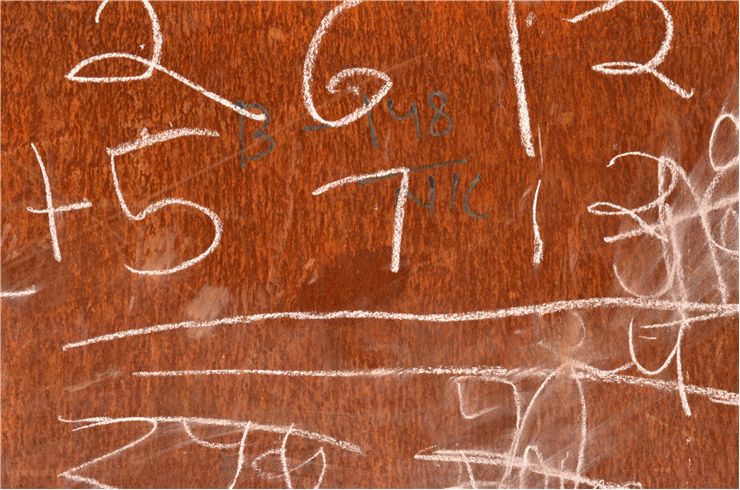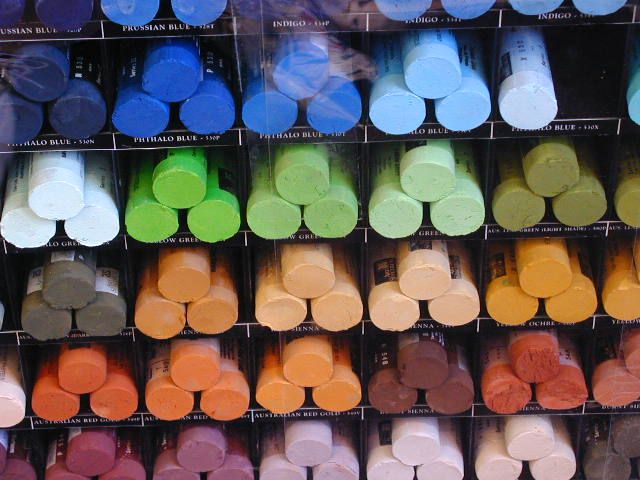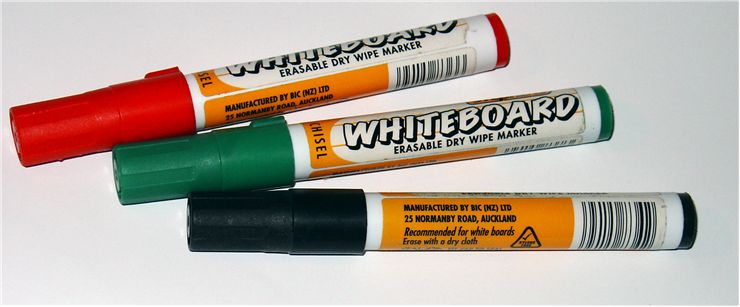Blackboard Chalk and Whiteboard Pen - History and Future
Blackboard chalk is a writing instrument used for writing and drawing primarily on blackboards but can also be used on other surfaces. Blackboard chalk is made in a shape of a stick that is 10mm thick and 80mm long, out of calcium sulfate in its dehydrated form - as gypsum or calcium carbonate.
First, chalk (the natural one) was used in prehistory for cave drawings. Later, artists used chalk for sketching, and some of these drawings survive until today because they were protected in shellac (a resin secreted by the female lac bug (Kerria lacca)).
The first chalk in the sticks appeared when artists found them convenient. They made it by grinding the natural chalk (calcium carbonate) and mixing it with water, clay, and pigment (natural pigments were used, like carbon for black or rust for red). Mix was then formed in the sticks and dried. Blackboard chalk became popular in the 19th century when classrooms became larger with more students, and there was a question about how to teach such a number simultaneously. Chalks were used on large blackboards where teachers wrote to the whole class and on small ones used by students at their desks. These boards were used for practice and had a small sponge for clearing the board. Blackboard chalk for use in classrooms was at first only white because the blackboards were... well, black (because they were made from slate), and white contrasted the black.
Later, in the 20th century, classroom boards were made of synthetic materials. Although some thought classroom boards should be yellow and chalk blue or purple to simulate written text, manufacturers started making classroom boards in green because that color does not train the eyes. As a good contrast, teachers started using yellow chalk. Chalk is still manufactured in many different colors, which helps draw diagrams and geometry.
A whiteboard pen (or a dry-erase marker) is a non-permanent marker using erasable ink. Its main purpose is to be used on slick, non-porous writing surfaces like whiteboards and overhead projectors and to be easily erased without leaving marks with a dry eraser.
Before there were dry-erase markers, there were wet-erase markers. A dry eraser could not erase these with a wet cloth. After them came whiteboard pens. The first whiteboard pen was invented by Jerry Woolf, who worked in Techform Laboratories. Later it was patented by Pilot Pen in 1975. Sanford made their dry marker called EXPO in 1976. It was a bulky black, red, blue, and green marker. Later, Sanford added thin variants, less unpleasant odor, and many more colors. Europe accepted whiteboards and dry markers in the 1980s. The United States had to wait until the ‘90s.
Whiteboards appeared before dry markers - somewhere in the ‘50s or ‘60s, but we don’t know precisely when. One story says Martin Heit, a photographer, and Korean War veteran, invented a whiteboard. At the same time, the other gives this honor to Albert Stallion, who worked at American steel producer Alliance. The first whiteboards appeared on the market in the 1960s and were wet-wiped. Then came dry markers, and whiteboards started replacing blackboards because of allergies and other potential health risks posed by chalk dust that was the product of erasing blackboards. First, whiteboards were made of enameled steel. Later cheaper variants of laminated chipboard, high-pressure laminates, and steel boards with a white synthetic (polyester or acrylic) coating were made. These have the characteristic of leaving a residue of erased markings. Those of the highest quality are made of enamel and are called porcelain or glass boards.


